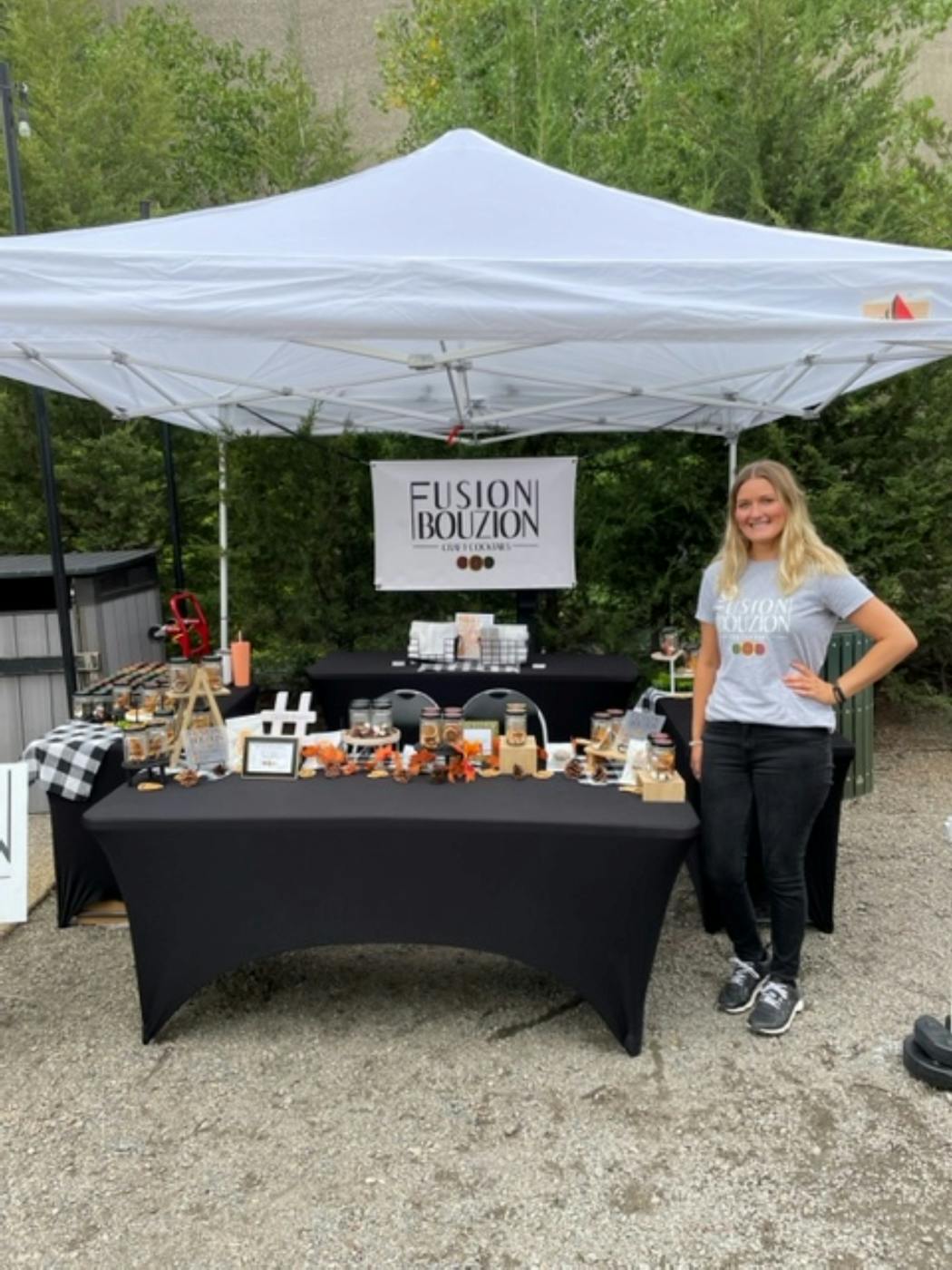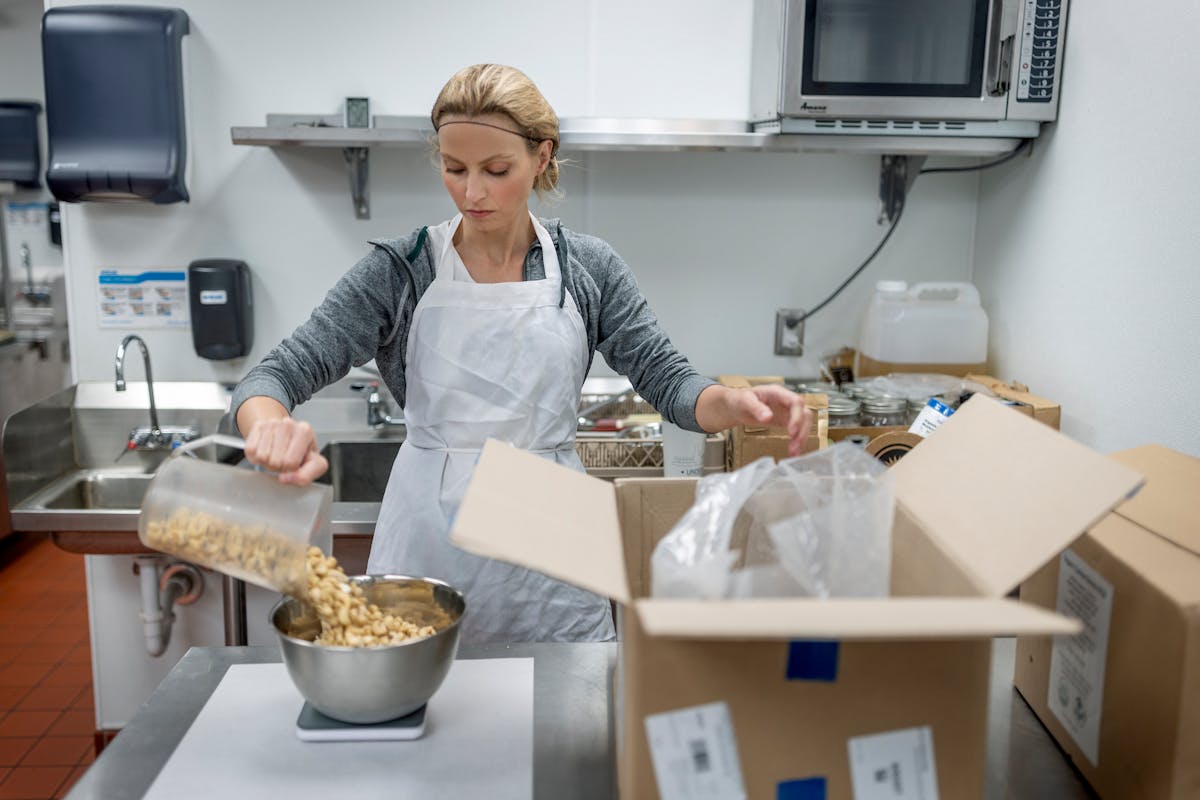Katie Cole loves a good cocktail.
But it wasn't until 2021, after a Minnesota law change allowed homemade food sellers to earn considerable money without a license, that Cole realized her affinity could become a full-time career.
In 2015, Minnesota legislators passed the state's cottage food law, allowing bakers, candy confectioners, picklers and more to sell homemade food products without a food license. As long as their products were "non-potentially hazardous," meaning they didn't support the growth of bacteria that could make people sick.
While that initial law was a good first step, producers couldn't sell more than $18,000 of product per year, which was basically "regulating a hobby," per Jennifer Carriveau, vice president of the Minnesota Cottage Food Producer's Association.
After more lobbying, changes passed in 2021 that increased the sales cap per registered individual up to $78,000 a year. It also added dog and cat treats as an allowed cottage food and allowed state law to recognize individuals as a business entity.
Now Cole — whose full-time job is selling craft cocktails jars with dehydrated fruit, spices and herbs through her company Fusion Bouzion — can sell food products from her Apple Valley home and make a living.
"It's really rewarding to be able to work for yourself," she said.
In 2015, there were fewer than 500 cottage food makers registered with the Minnesota Department of Agriculture (MDA). Last year, 7,300 businesses registered, with 40% being new.
Here's how you can join their ranks:
Understand the science
There are two levels of registrations under the cottage food law. Makers must complete the appropriate training depending on if they want to qualify under Tier 1 or Tier 2.
Tier 1 registrants are those who think their annual food sales won't surpass $7,665, and they must go through a free, self-guided online training presentation and exam.
Tier 2, which has the increased sales cap of $78,000, must complete an approved safe-food-handling training course. The University of Minnesota Extension Food Safety Program offers a $50 online one.
Katherine Simon, director of the MDA's food and feed safety division, suggested everyone who wants to sell homemade food products take such a course. With better knowledge of what could spoil or affect a product's quality, entrepreneurs can better understand regulations and know how to adjust their recipes and packaging.
Products under the cottage food law need to have a pH of 4.6 or below and/or have a water activity of 0.85 or less, which means they are relatively dry and shelf-stable. There are labs in the Twin Cities that can test your food, like MarketFresh Food Testing Laboratory, Cole said.
To help determine if a food product falls under the cottage food law, the Minnesota Cottage Food Producer's Association (MCFPA) and the Minnesota Farmers' Market Association have helpful guidance online. The MCFPA also has regular supplemental training and meetings.
Time to taste-test
Make sure numerous people have tried your product and given it the thumbs-up.
Almost 15 years ago, Mark Porisch of Lucky's Sauces began to make hot sauces in his Mankato kitchen using peppers from his garden. Porisch gave out samples of the sauce to players in his volleyball league after games.
"It doesn't matter that I liked it," Porisch said. "Other people liked it and thought it was good enough to take a bottle home."
Cost vs. price
Every food entrepreneur needs to determine the cost per unit before they decide to start a business. Many factors play into how much a product costs, such as ingredients, packaging and labor.
To help keep costs low, some producers on Facebook buy supplies in bulk together. Porisch suggested potential producers could also take a cost-accounting course.
Setting the right price can be even trickier.
"Don't set your prices too low," said Metallica Walker of Treat Me Too Dog Treats. "You should look at other businesses similar to yours and see how they set their prices. That way, you are not undervaluing yourself."
Location, location, location
Homemade food doesn't actually have to come from your own kitchen, though many food entrepreneurs start that way. Commercial kitchens are also an option.
Shared commercial kitchens, like MSP Kitchenery, Dots Gray and Kitchen on the Bluff, offer restaurant-quality equipment and spaces for short- or long-term rent. They can also offer training and networking opportunities.
When businesses grow larger, they might consider a co-packer or contract packer who could process their food for a fee.
Consider leasing out a kitchen entirely with a few other businesses to split the cost, Porisch said. He now shares a kitchen space in St. Paul's Hamline-Midway industrial area with Peter Chehadeh of garlic sauce company Grlk and Tom Ruhland of Ruhland's Strudel Haus. They all agreed ahead of time on kitchen etiquette, like cleaning responsibilities, and help each other.
"It's worked out really well," he said. "I made a delivery for Tom the other day. ... They do the same thing. If I had a big production I need to get out, I know Peter can help me label."
Where to sell
Cottage food makers have to sell products directly to customers, whether at a market, community event or from home. Consider aspects like hours, fees, travel cost and staffing.
"It depends on your personality," MCFPA President Shelley Erickson said. "Some people are a lot more outgoing, and those types do great at farmers' markets. But for people who are more introverted, it's easier for them to sell things through Facebook pages and through word of mouth."
Don't be discouraged if some craft shows aren't successful, Cole said.
"The advice I have for someone who is starting a business under the cottage food law is learn about the markets and events you want to sell at so that you know how much you're going to make for each event," Walker said.
Cover yourself
Make sure you purchase insurance so you're covered if there are any issues, Erickson said.
"Even if you're not going to keep doing it, you can always cancel it. But you want to have insurance," she said.
Social media accounts and business cards are also key when cottage food producers first start out, Erickson said. Also remember to market your product by taking and sharing pictures.
Start small
Try to focus on one or a few products instead of too many at once, Erickson said.
"Find the things you enjoy making the most and stick with those," she said. "... Make sure what you are doing, you're enjoying it, you're profiting from it, and it's something sustainable."
For Walker, currently under the lower Tier 1 cap, she's hoping her peanut butter and pumpkin oat crunchies, dog-safe cupcakes and "woofarons" (her take on macarons) keep growing.
"I would love to someday have a storefront where dog owners can come with their dog and grab a treat or pick up a doggy cake for their pup," Walker said. "... I enjoy the fact that I can say, 'I built this, and I am the owner.' "

Minnesota Department of Health rescinds health worker layoffs

Eco-friendly house on 30 acres near Marine on St. Croix listed at $1.6M

DOGE cuts federal money for upgrades at Velveeta plant in New Ulm






